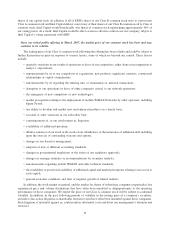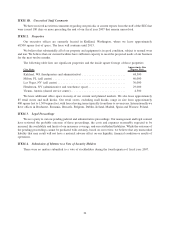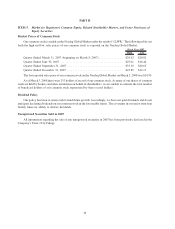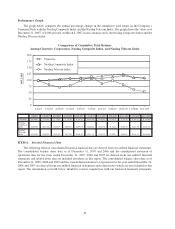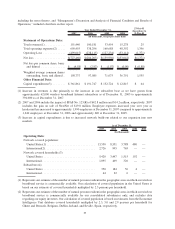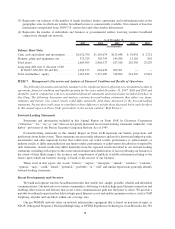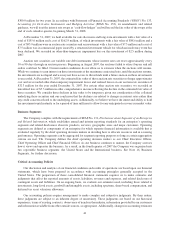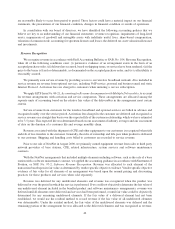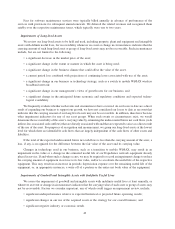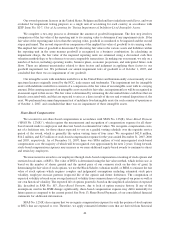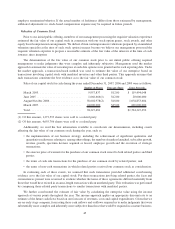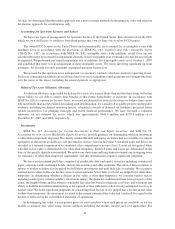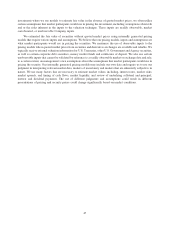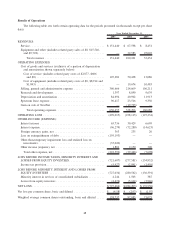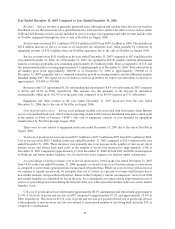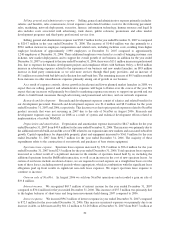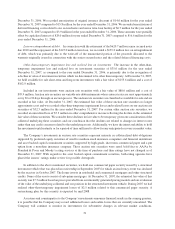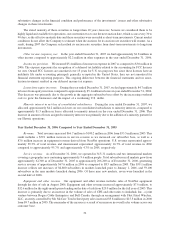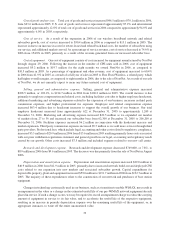Clearwire 2007 Annual Report Download - page 51
Download and view the complete annual report
Please find page 51 of the 2007 Clearwire annual report below. You can navigate through the pages in the report by either clicking on the pages listed below, or by using the keyword search tool below to find specific information within the annual report.Fees for software maintenance services were typically billed annually in advance of performance of the
services with provisions for subsequent annual renewals. We deferred the related revenues and recognized them
ratably over the respective maintenance terms, which typically were one to two years.
Impairments of Long-lived Assets
We review our long-lived assets to be held and used, including property, plant and equipment and intangible
assets with definite useful lives, for recoverability whenever an event or change in circumstances indicates that the
carrying amount of such long-lived asset or group of long-lived assets may not be recoverable. Such circumstances
include, but are not limited to the following:
• a significant decrease in the market price of the asset;
• a significant change in the extent or manner in which the asset is being used;
• a significant change in the business climate that could affect the value of the asset;
• a current period loss combined with projections of continuing losses associated with use of the asset;
• a significant change in our business or technology strategy, such as a switch to mobile WiMAX wireless
broadband network;
• a significant change in our management’s views of growth rates for our business; and
• a significant change in the anticipated future economic and regulatory conditions and expected techno-
logical availability.
We frequently evaluate whether such events and circumstances have occurred. As our losses to date are a direct
result of expanding our business to support our growth, we have not considered our losses to date as an event that
indicates that the carrying amount of our long-lived assets may not be recoverable. In addition, there have been no
other impairment indicators for any of our asset groups. When such events or circumstances exist, we would
determine the recoverability of the asset’s carrying value by estimating the undiscounted future net cash flows (cash
inflows less associated cash outflows) that are directly associated with and that are expected to arise as a direct result
of the use of the asset. For purposes of recognition and measurement, we group our long-lived assets at the lowest
level for which there are identifiable cash flows that are largely independent of the cash flows of other assets and
liabilities.
If the total of the expected undiscounted future net cash flows is less than the carrying amount of the asset, a
loss, if any, is recognized for the difference between the fair value of the asset and its carrying value.
Changes in technology used in our business, such as a transition to mobile WiMAX, may result in an
impairment in the value or a change in the estimated useful life of our Expedience network equipment already
placed in service. If and when such a change occurs, we may be required to record an impairment charge to reduce
the carrying amount of equipment in service to its fair value, and/or to accelerate the useful life of the respective
equipment. This may result in an increase in periodic depreciation expense over the remaining useful life of the
equipment, or, in appropriate instances, a write off of a portion or the entire net book value of the equipment.
Impairments of Goodwill and Intangible Assets with Indefinite Useful Lives
We assess the impairment of goodwill and intangible assets with indefinite useful lives at least annually, or
whenever an event or change in circumstances indicates that the carrying value of such asset or group of assets may
not be recoverable. Factors we consider important, any of which could trigger an impairment review, include:
• significant underperformance relative to expected historical or projected future operating results;
• significant changes in our use of the acquired assets or the strategy for our overall business; and
• significant negative industry or economic trends.
43


